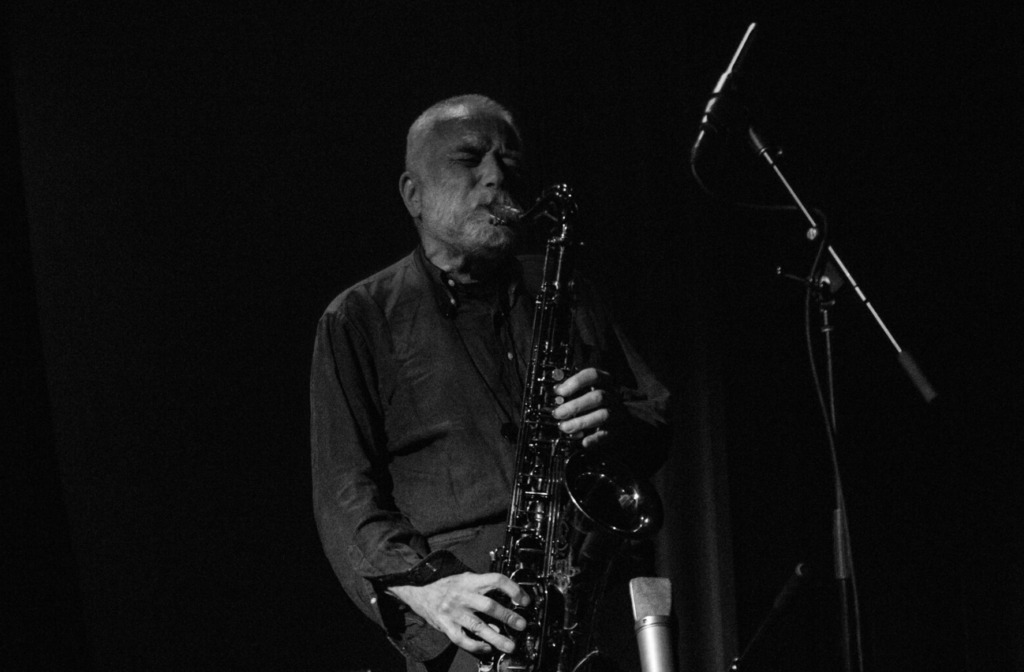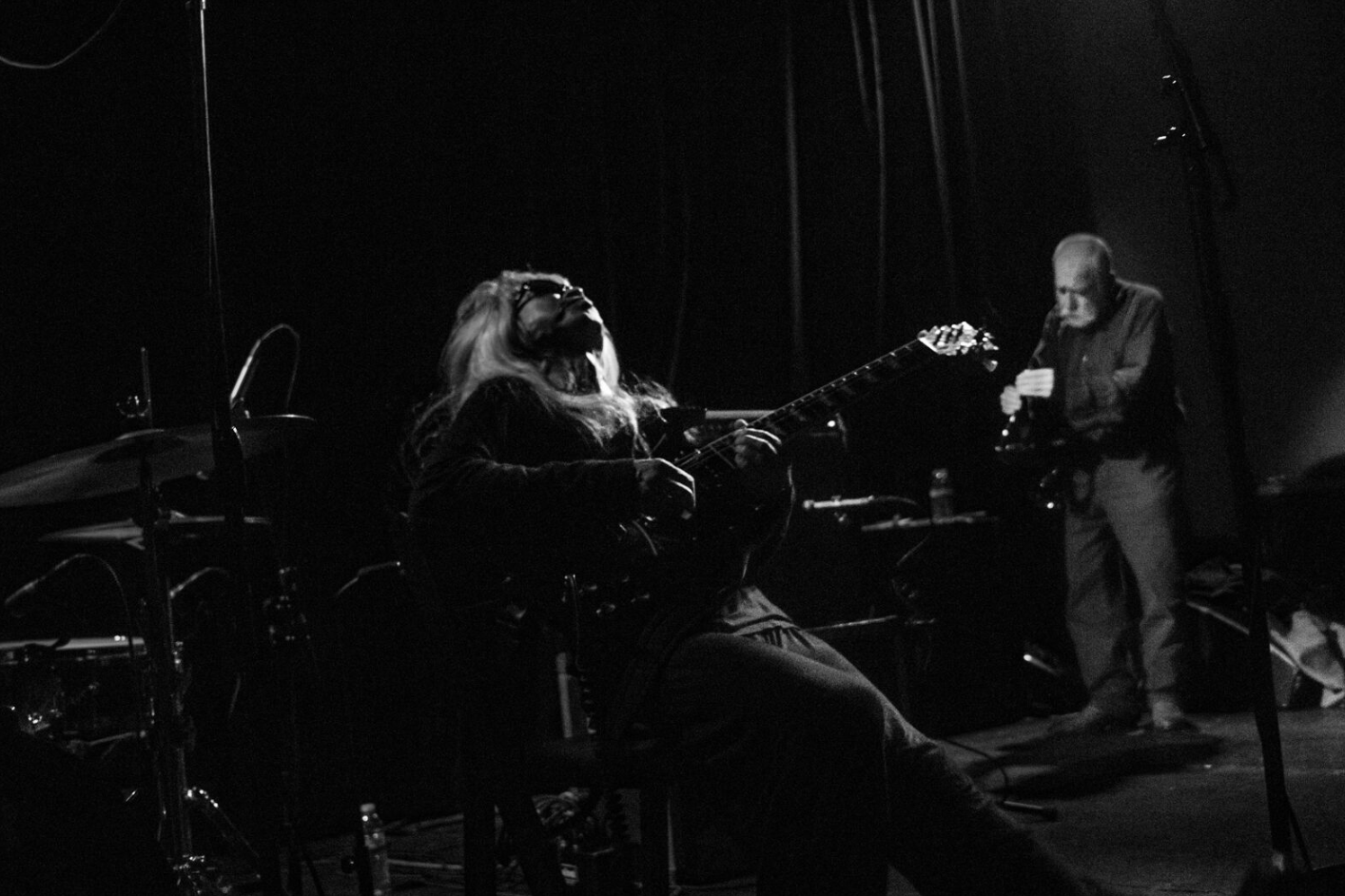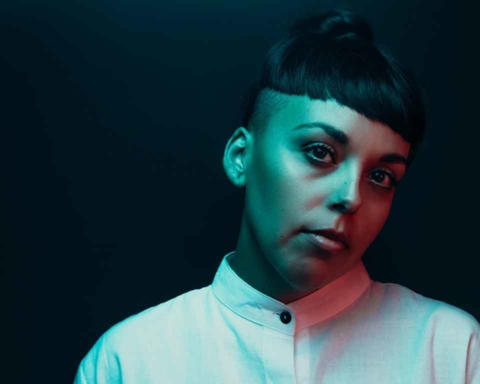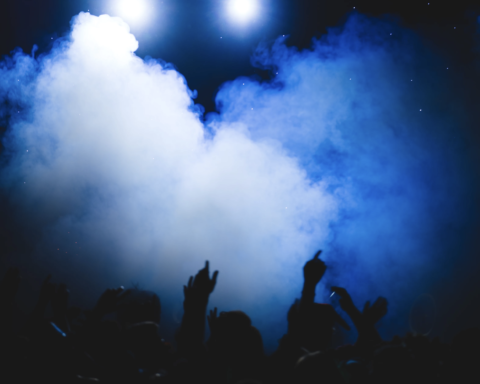Everyone wants to be free.
The late, great Nina Simone said I’ll tell you what freedom is. No fear. At The Chapel Wednesday night, that’s exactly what Peter Brötzmannan and Keiji Haino showed to their wall-to-wall packed house.
Both musicians are known as improvisational or free artists, creating music together on the spot, right there on the stage, in real time. There was no set list. There was no album they were touring for. There was no crowd favorite. From what I could tell, I as well as the audience weren’t even sure when a song began or ended, let alone when to clap.
Peter Brötzmannan, born in Remscheid, Germany in 1941, career started in the European jazz culture of the 1960s. A clarinet and saxophone player, he is a major figurehead in free jazz and experimental music. Brötzmannan stood in the back right of the stage almost near the curtain, like he was trying to hide. Immediately, I sensed a somber, quiet intensity about him. His movements were slow, pained, heavy, but deliberate. Every action counted.
Brötzmannan is tall, but with a hunched stance like a bent oak tree. His baggy clothes reminded me of someone about to go fishing for the day. Gripped between his two, meaty hands were his clarinet with his sax close by. The amber stage light from above barely seemed to penetrate his thick, gray beard. On the floor, the crowd stood maybe two feet from Brötzmannan. He paid no attention to them, their flashes, their anxious breath or questioning eyes.
Brötzmannan knew not what was coming, only that it would be.

Keiji was thin, dressed head to toe in black, probably no bigger or taller than a sophomore in high school. He wore thick, onyx-colored sunglasses that wrapped around his head. I could barely notice his sunken face and his pursed lips through his chest-length wispy gray hair that hung over his face. Born in Chiba, Japan in 1952 his work revolves around rock, percussion, improvisation, noise music, psychedelic, minimalism, and drone music. His first passion was theatre, leaning towards The Theatre of Cruelty and the surrealist movement of the 1930s in Paris. After experiencing his raging, violent, enraptured performance, that makes complete sense to me. Keiji, checking his guitar and his drum set, walked up to the single microphone slightly left of the middle of the stage.
There was some scattered applause that triggered little to no reaction from Keiji or Brötzmannan as the room filled with a sudden air of reverence.
A deafening silence. All anyone could hear was the creaking of the floorboards under either player’s feet. Then, as if from the depths of some ancient, prehistoric cave, there erupted a pterodactyl-like screeching from Keiji.
The audience was stunned. No one knew how to act, what to do, whether to cheer or run in terror. Keiji grunted, clicked, and screamed into his mic, Brötzmannan all the while in the back blowing into his clarinet in short, sharp bursts. They seemed to demand attention without fear. They were free to explore, to make mistakes, to go back, and to start again.
I ran downstairs to get closer. From the vantage point of the fourth or fifth step, I watched as Keiji’s animalistic energy morphed into a calm, almost shamanistic one. He had cymbals and was clashing them together. Every time they would explode, he’d circle them around each other as if molding their energy.
Throughout, eventually, I saw the conversation going on between the two of them. At first, it just sounded like repeated strikes and blows of their instruments, but eventually that repetition generated into a tangible, followable melody.
I got right up to stage right and was engulfed in booming Keiji’s guitar playing. He was sitting with his back arched, head hung, his fingers curled inward while they struck the strings. They looked like claws. Brötzmannan machine gun saxophone rose and rose with Keiji’s spiraling riffs until both of them seemed to create a resonating, pre-void droning sound. They played in that spontaneously created space for what felt like an eternity, moving and living free within it as long as they wished, or as long as the moment would allow them to. Keiji leaned back in his chair hard, his gray hair whipping back into the air, nearly sending him over as he struck his guitar and stopped. Brötzmannan, his neck muscles constricted, his veins bulging, his eyes shut tight, let out one last note.
The note was so simple, so pure, innocent, and childlike, almost like we’d been warped back in time to witness the first note Brötzmannan had ever played.
A pause followed by dually deafening cheers from the audience.
When they’d first started, there had been nothing. Like children playing with toy blocks, both had built, torn apart, and started to build again. Eventually, after much trial and play, Keiji and Brötzmannan molded and created an experience that embodied a performance of unbridled liberation.
With no one to answer to but themselves, these two musicians were free, seemingly without fear, to create what they wished, when they wished, where they wished.
If that’s not freedom, I don’t know what is.
Photos courtesy of The Chapel
[envira-gallery id=”10942″]









